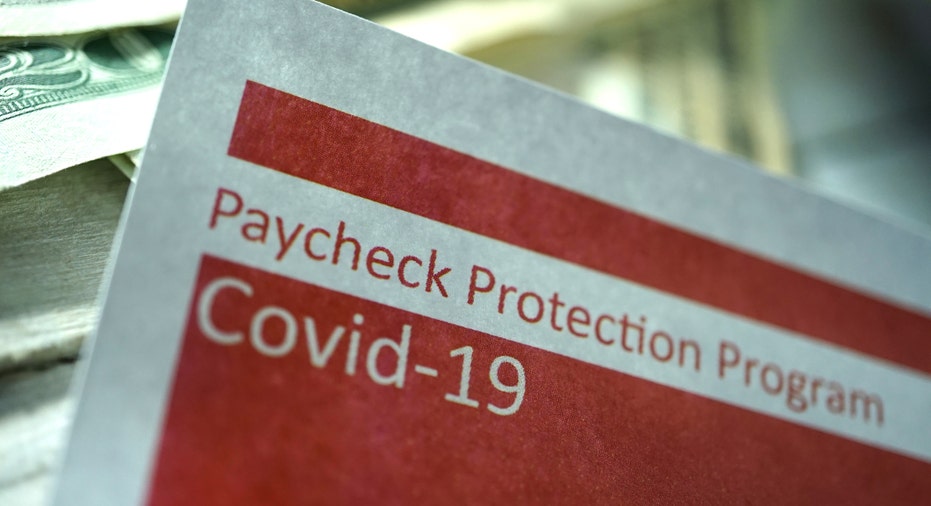What to do after your PPP loan money runs out

Five options that could provide the funding you need. (iStock)
Small businesses that stayed afloat during the summer thanks to the government’s Paycheck Protection Plan (PPP) may have used up their funds. Unfortunately, COVID-19 is sticking around. The pandemic is still impacting the economy as states limit occupancy, and Americans watch their wallets, putting many business owners' livelihood at risk.
The PPP funding was part of the federal Coronavirus Aid, Relief, and Economic Security (CARES) Act that also included stimulus checks for individual Americans. The Small Business Administration (SBA) offered the loan as an incentive for small businesses to keep their payroll. If owners spend the funds on eligible expenses, like employee retention and payroll, they may qualify for loan forgiveness.
The SBA approved more than 5.2 million PPP loans, totaling $525 billion during the program, which ended August 8, 2020. While Democrats and Republicans concede that another round of funding is needed, they've yet to agree on a new coronavirus aid relief bill. If businesses don’t get the help they need, experts predict that a wave of bankruptcies could be on the horizon. If you’re a small business owner, here are five other options you can consider.
- Take out a personal loan
- Apply for a hardship loan
- Look into a conventional SBA loan
- Home equity loan
- Consider adding a business partner
1. Take out a personal loan
Depending on your credit history, a personal loan might be a viable option. Typically, personal loans are for personal expenses, such as consolidating debt or paying for an emergency. However, if your small business is facing the chance of bankruptcy, that can be considered an emergency, too. A personal loan may help you bridge the gap and cover payroll and expenses until the economy recovers.
To get the best rates on a personal loan request, borrowers will need to demonstrate good credit. Visit an online marketplace like Credible to compare lenders and explore personal loan options.
HOW TO BOOST YOUR CHANCE OF GETTING PERSONAL LOAN APPROVAL
2. Apply for a hardship loan
If your credit isn’t good, you may want to look into a coronavirus hardship loan. Like the PPP, this low-cost personal loan is for people whose income was lost or reduced due to COVID-19.
Coronavirus hardship loans are for consumers affected by the pandemic, such as those who were laid-off or furloughed. Before you take on additional debt, use a personal loan calculator, like this one from Credible, to determine how the payment will impact your budget.
Credible allows you to get a personal loan prequalification in minutes. And since it involves a soft inquiry only, prequalifying won't affect your credit score.
9 OF THE BEST PERSONAL LOANS IN 2020
3. Look into a conventional Small Business Administration (SBA) loan
Another loan option could be to take out a conventional SBA loan, said Andi Gray, the president of Strategy Leaders, a business consulting firm.
"They’ll only get it if they can show that they cover current debt service, operating expenses, and additional loan payments out of their current cash flow," she said. "Applicants should be prepared for a highly documented approval process by both the bank and the SBA. The loan application review can take months."
Be sure to look into local funding, added Richard Vazza, certified financial planner and founder of Driven Wealth Management in San Diego, Calif.
"For example, I've emailed a number of my small business clients to let them know about the latest local San Diego funding options available," he said. "If the underlying business is healthy and just needs a cash infusion to make it through, current rates can make borrowing attractive."
4. Home equity loan
If you have excess equity available in your home or if you own property through your business, use that capital, said Gray. "But expect it to take a couple of months to get an appraisal and get through the lending approval process," she said.
It’s important to note that pulling money out of an asset, like a home, will put it at risk. If your business doesn't recover, you could jeopardize your house if you default on your home equity loan. Think through this decision carefully and, if you go down this route, ensure that you have alternate forms of income to make the payment.
PERSONAL LOAN OR HOME EQUITY LOAN: WHICH IS BETTER?
5. Consider adding a business partner
Finally, there may be power in numbers. If your business has value, you may consider adding a partner who can help the business weather the economic conditions.
"Find someone local who has cash, is looking to get involved in a business like yours, and sell them a piece of the business," said Gray. "Or find a business to buy that has enough free cash flow to meet loan requirements when added to your businesses’ free cash flow position, and make an offer to buy them."
Congress may ultimately come to an agreement and offer businesses an additional lifeline in the form of another round of debt relief. Until then, weigh your options by comparing lenders and choose the best long-term solution for your business.
EVERYTHING YOU NEED TO KNOW ABOUT PERSONAL LOANS



















